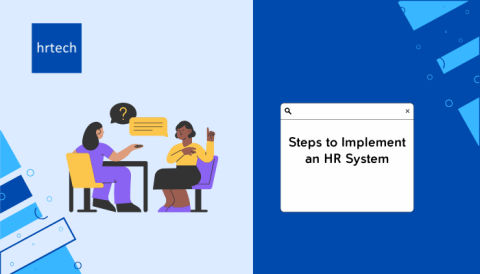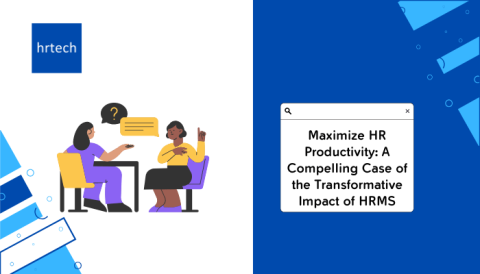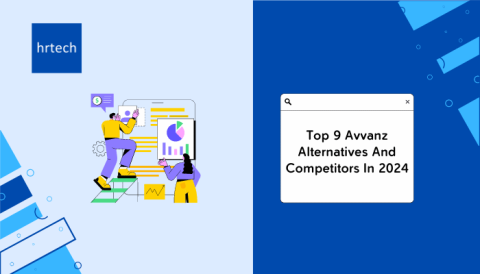Technology has revolutionized the way businesses operate, and the field of human resources (HR) is no exception.
In recent years, HR technology has transformed the way companies manage their human resources.
From recruitment and onboarding to performance management and employee engagement, technology has simplified and automated processes, improved efficiency, and enabled data-driven decision-making.
Let’s dive in and take a closer look at the role of technology in HR, along with its benefits, challenges, and latest trends.
Role Of Technology In HR
Recruitment And Talent Acquisition
Gone are the days of sifting through stacks of resumes and posting job ads in newspapers.
Today, companies use online job boards, social media, and their own career websites to attract talent.
In fact, studies show that over 8 in 10 businesses use social media to fulfill their recruiting requirements.
Applicant tracking systems (ATS) help HR professionals manage the entire recruitment process, from posting jobs to screening resumes and scheduling interviews.
AI-powered tools can even analyze resumes and match candidates to job requirements, saving time and ensuring a better fit.
Data shows that ATS can reduce the time-to-fill by up to one-fifth. And in fact, over 86% of people who used an ATS noticed improvement in their hiring process.
Onboarding And Employee Management
Once a new hire joins the company, technology plays a crucial role in their onboarding experience.
Did you know? Employee retention in organization can be improved by up to 82% by implementing better onboarding processes.
Digital onboarding platforms allow new employees to complete paperwork, access training materials, and connect with their team members before their first day on the job.
HR chatbots can answer common questions and guide new hires through the onboarding process, freeing up HR staff to focus on more strategic tasks.
In fact, here’s an interesting data:
30% employees who have been onboarded using AI-powered onboarding processes prefer to not leave the company within their first year compared to those who have been onboarding without any such process.
This just highlights the role and importance of AI and technology in HR processes like onboarding.
Now, like onboarding, technology also helps in employee data management. For instance,
Employee self-service portals give employees access to their personal information, benefits enrollment, and time-off requests, empowering them to manage their own HR needs.
This not only saves time for HR professionals but also improves employee satisfaction and engagement.
Here’s an overview of how self-service technology can help improve HR efficiency:
| HR Process: | Manual: | Self-Service: |
| Benefits Enrollment | 2-4 weeks | 2-3 days |
| Time-Off Requests | 1-2 days | 1-2 hours |
| Employee Information Updates | 1-2 weeks | 1-2 days |
Performance Management And Employee Engagement
Annual performance reviews are becoming a thing of the past, as companies embrace continuous feedback and performance tracking.
Software like 15Five, Lattice, and BambooHR allow managers and employees to set goals, provide feedback, and track progress in real-time.
This approach fosters better communication, alignment, and employee development.
Pulse surveys and employee sentiment analysis tools help HR professionals gauge employee morale and identify areas for improvement. By regularly collecting feedback and acting on it, companies can boost employee engagement and retention.
Learning And Development
Technology has transformed the way companies train and develop their employees.
According to a survey report, there’s been a steady shift from instructor-led traditional learning methodology to online learning. In fact, participants of the survey highlighted that they spend 57% more time in online learning than they did a few years ago.
E-learning platforms like Udemy, and Coursera offer a wide range of courses and certifications that employees can access anytime, anywhere.
Virtual training sessions and webinars allow companies to train employees across different locations and time zones, saving on travel costs and time.
In fact, IBM saved $200 million right after they switched to online learning.
Personalized learning paths and skill development platforms help employees identify and close skill gaps, preparing them for future roles and responsibilities.
This not only benefits the individual employee but also helps the company build a strong talent pipeline.
Compensation And Benefits Administration
Managing payroll and benefits can be a complex and time-consuming task.
But the latest developments in payroll technology and benefits administration have made it much easier.
For instance, automated payroll processing ensures accurate and timely payments. Whereas, benefits administration software streamlines enrollment and management of health insurance, retirement plans, and other employee benefits.
There are also several total rewards management software that provide a complete view of an employee’s compensation and benefits package, helping companies make data-driven decisions and communicate the value of their offerings to employees.
The Benefits Of Technology In HR
- Increased efficiency and productivity – Automating routine tasks and streamlining processes allows HR professionals to focus on more strategic initiatives that add value to the business.
- Enhanced data-driven decision-making – HR technology generates vast amounts of data that can be analyzed to identify trends, predict future needs, and make informed decisions about talent management and organizational strategy.
- Improved employee experience and engagement – Self-service portals, mobile apps, and other employee-centric technologies make it easier for employees to access information, complete tasks, and communicate with HR and their managers, leading to higher satisfaction and engagement levels.
- Better talent acquisition and retention – Technology helps companies cast a wider net and attract top talent, while also providing insights into employee sentiment and risk of turnover, allowing HR to proactively address issues and retain key employees.
- Cost savings and ROI – By automating processes, reducing errors, and improving efficiency, HR technology can help companies save money and achieve a better return on investment.
Challenges And Considerations
While the benefits of HR technology are clear, there are also some challenges and considerations to keep in mind:
Data Privacy And Security
With the increasing amount of sensitive employee data being collected and stored digitally, data privacy and security are top concerns for HR professionals.
Companies must ensure that they have robust security measures in place to protect employee information and comply with relevant regulations, such as GDPR and HIPAA.
Integration With Existing Systems And Processes
Implementing new HR technology can be challenging, especially if it needs to integrate with existing systems and processes.
Companies should carefully evaluate their current HR tech stack and consider how new tools will fit into the overall architecture.
Change Management And Employee Adoption
Introducing new technology can be disruptive, and employees may resist change.
HR must work closely with IT and other stakeholders to develop a change management plan that includes communication, training, and support for employees.
Engaging employees throughout the implementation process can help ensure a smoother transition and higher adoption rates.
Balancing Technology With Human Touch
While technology can automate many HR tasks, it’s important not to lose the human touch.
Employees still value personal interactions and relationships with their managers and HR team. Companies should strive to find the right balance between technology and human interaction, using technology to enhance rather than replace the human element of HR.
HR Technology Trends To Watch Out For
As technology continues to evolve, several trends are shaping the future of the HR technology field:
Artificial Intelligence And Machine Learning
AI and machine learning are increasingly being used in HR to automate tasks, analyze data, and provide insights.
From resume screening and candidate matching to employee sentiment analysis and turnover prediction, AI is helping HR make smarter, faster decisions.
People Analytics And Predictive Modeling
People analytics involves using data to gain insights into workforce trends, performance, and engagement.
Predictive modeling takes this a step further by using historical data to predict future outcomes, such as which employees are at risk of leaving or which candidates are most likely to succeed in a role.
Cloud-Based HR Solutions
Cloud-based HR software is becoming increasingly popular, as it offers scalability, flexibility, and cost savings compared to on-premise solutions.
Cloud-based systems also make it easier for companies to access and analyze HR data from anywhere, at any time.
Mobile-First HR Applications
With the rise of remote work and the growing importance of employee self-service, mobile-first HR applications are becoming a must-have.
These apps allow employees to access HR information, complete tasks, and communicate with their managers and colleagues from their smartphones or tablets.
Virtual And Augmented Reality In Training And Development
Virtual and augmented reality (VR/AR) technologies are being used to create immersive learning experiences for employees.
From safety training to soft skills development, VR/AR can help employees practice and apply new skills in a realistic environment, without the risks or costs associated with real-world training.
Best Practices for Implementing HR Technology
To successfully implement HR technology and realize its full potential, companies should follow these best practices:
- Align technology with HR strategy and business goals – Before investing in new technology, HR should ensure that it aligns with the overall HR strategy and supports the company’s business objectives.
- Conduct thorough needs assessment and vendor evaluation – HR should assess the organization’s current and future needs, and carefully evaluate potential vendors based on factors such as functionality, ease of use, integration capabilities, and customer support.
- Ensure data security and compliance – Companies must prioritize data security and compliance when implementing HR technology, working closely with IT and legal teams to ensure that all necessary safeguards are in place.
- Provide adequate training and support for employees – To ensure high adoption rates and effective use of new technology, HR should provide comprehensive training and ongoing support for employees, including user guides, videos, and help desk services.
- Continuously monitor and optimize technology usage – HR should regularly monitor and analyze technology usage and performance metrics to identify areas for improvement and ensure that the technology is delivering the desired results.
Final Thoughts
Technology is rapidly transforming human resource management. From onboarding to performance management and employee engagement, its effects can be seen in every area.
But implementing HR technology isn’t without its challenges. Companies need to carefully consider issues like data privacy, security, and integration with other systems to ensure a smooth transition.
As we look into the future, it’s clear that HR technology will continue to evolve and the role of technology in HR will become even more important.
Want to stay ahead with the latest HR skills, knowledge, and industry trends? Visit hrtech to explore our industry leading HR training courses and certification programs.





